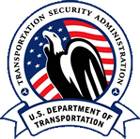Is TSA Setting This Program Up To Fail?
 The
head of the nation's largest pilot union has told the TSA that the
new rule governing how armed pilots would carry their firearms
creates more problems than it solves.
The
head of the nation's largest pilot union has told the TSA that the
new rule governing how armed pilots would carry their firearms
creates more problems than it solves.
Responding earlier to a draft of the final rule, Capt. Duane
Woerth (below, right), president of the Air Line Pilots
Association, said, "We believe that there are significant security,
safety, and liability issues that arise from the TSA's proposed
weapon carriage methodology." In a follow-up communication to
Admiral James Loy, head of TSA, Woerth said that ALPA cannot
endorse the procedure as written.
 The requirement that pilots carry the firearm in a
lock-box, rather than in a holster on their person, gives the
appearance of providing protection for the firearm, but in
actuality does just the opposite. Law enforcement officers
routinely carry their firearms holstered on their person because
that is the most secure protection against loss or theft while
transporting it during travel.
The requirement that pilots carry the firearm in a
lock-box, rather than in a holster on their person, gives the
appearance of providing protection for the firearm, but in
actuality does just the opposite. Law enforcement officers
routinely carry their firearms holstered on their person because
that is the most secure protection against loss or theft while
transporting it during travel.
In arriving at this conclusion, ALPA consulted numerous experts
on the use of firearms in law enforcement. One of them, Wade
Jackson, a retired FBI agent who served for nearly ten years as
unit chief of the FBI's firearms training unit in Quantico, Va.,
upon hearing of the TSA rule, said "The best way for a law
enforcement officer to ensure the security of his/her duty weapon
is to carry the weapon on their person. A recent audit of FBI lost
and stolen weapons by the DOJ Office of the Inspector General -- an
audit which spanned nearly 30 years -- did not disclose a single
incident of theft when the weapon was secured in a holster, on the
person, as FBI policy requires. The audit also revealed that the
vast majority of the weapons were lost or stolen when they were
carried in some other manner, such as in gym bags, hand bags or
briefcases."
Lock-box carriage also raises numerous legal and security
issues:
- If the TSA becomes aware that a weapon has been stolen from a
Federal Flight Deck Officer's (FFDO) bag located inside of a
secured area, what actions will be necessary to ensure that the
weapon does not pose a hijack threat to airline operations?
- Will it be necessary to evacuate all people from the air
operations area and/or security identification display area to
perform a search for a weapon that is reported missing? Will both
the origin and destination airports be affected? If the weapon is
never found, how will the TSA determine that the weapon is not
within the secured area?
-
 If an
FFDO's weapon is stolen while in the control of the airline and out
of the FFDO's immediate possession, which is liable -- the airline,
the TSA, or both? (This already is a widespread problem for the
theft and loss of ordinary checked luggage of passengers under the
post-9/11 security procedures.)
If an
FFDO's weapon is stolen while in the control of the airline and out
of the FFDO's immediate possession, which is liable -- the airline,
the TSA, or both? (This already is a widespread problem for the
theft and loss of ordinary checked luggage of passengers under the
post-9/11 security procedures.)
- If a crime is committed with a weapon stolen while in the
control of the airline, but out of the FFDO's immediate possession,
which is liable -- the airline, the TSA, or both?
- What liability does the FFDO face if his or her weapon is
stolen while out of his or her immediate possession and used to
commit a crime?
- What provisions has the TSA made to provide an alternate weapon
if the FFDO's firearm is lost or stolen while they are deadheading
or commuting and need the weapon during the remainder of their
travels as operating crewmembers?
 The TSA rule also apparently violates a specific
provision in the law that created the FFDO program, requiring
training "to ensure that the officer maintains exclusive control
over the officer's firearm at all times ... " The TSA rule would
require an FFDO pilot who is flying as a passenger (deadheading or
commuting) to have the weapon stowed in the cargo hold -- where it
would not be under the officer's control.
The TSA rule also apparently violates a specific
provision in the law that created the FFDO program, requiring
training "to ensure that the officer maintains exclusive control
over the officer's firearm at all times ... " The TSA rule would
require an FFDO pilot who is flying as a passenger (deadheading or
commuting) to have the weapon stowed in the cargo hold -- where it
would not be under the officer's control.
TSA has indicated that it will review the program after the
initial class of 48 pilot applicants has been trained and deployed
and make any necessary improvements. We are hopeful that by that
point the TSA will realize that the lock-box option is seriously
flawed. Failing that, because of the many concerns over this
procedure, ALPA will pursue all options, up to and including legal
and/or legislative action, to correct this problem.
 1st Annual Affordable Flying Exposition Gets Its Footing
1st Annual Affordable Flying Exposition Gets Its Footing Aero-News: Quote of the Day (11.04.25)
Aero-News: Quote of the Day (11.04.25) Aero-News: Quote of the Day (11.05.25)
Aero-News: Quote of the Day (11.05.25) Airborne 10.30.25: Earhart Search, SpaceX Speed Limit, Welcome Back, Xyla!
Airborne 10.30.25: Earhart Search, SpaceX Speed Limit, Welcome Back, Xyla! ANN's Daily Aero-Linx (11.05.25)
ANN's Daily Aero-Linx (11.05.25)






